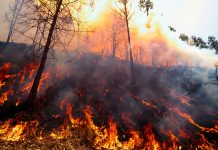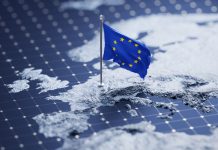Global air pollution demands urgent action. With toxic smog choking cities worldwide and 99% of the population breathing unsafe air, 2025 must be the year for decisive policy changes. A key, often overlooked, target is tropospheric ozone, a potent greenhouse gas and dangerous pollutant
Policymakers can no longer delay action on the global air pollution crisis. As toxic smog engulfs Los Angeles, US, due to wildfires, and a combination of crop burning, transport fumes and industrial pollution means that cities like Hanoi in Vietnam and New Delhi in India are blanketed by noxious hazes, an alarming 99% of the global population are breathing air not deemed safe by the World Health Organization (WHO). At a European and international level, 2025 must be the year for serious policy action. One little-known issue that should be central to these efforts is the forgotten greenhouse gas known as tropospheric ozone, sometimes called ground-level ozone.
The tropospheric ozone threat
A gas that forms when pollutants from a wide range of sources react with each other in sunlight, tropospheric ozone is driven up by industrial activities, petrol- and diesel-powered transport, livestock farming and fossil fuel energy production. Unlike stratospheric ozone, which exists higher up in the atmosphere and protects us from the sun’s harmful UV rays, it’s a toxic pollutant that threatens all living organisms, including plants, animals and humans.
Globally, it’s linked to the premature deaths of half a million people each year. Plus, it puts our capacity to feed everyone at risk, as when it’s present over farmland, it disrupts the growth of staple crops, like wheat and maize.
In addition to causing health issues such as respiratory issues, reducing lung function, and exacerbating chronic conditions like asthma, tropospheric ozone is a dangerous greenhouse gas – far more potent than carbon dioxide per tonne. As one of the super pollutants driving half of global warming, it’s short-lived but has far-reaching effects. It has already caused approximately 0.23°C of present-day warming. Despite this, it has long gone under the policy radar and isn’t part of any formal climate commitments. This must change. The reality is that present decarbonisation pathways alone won’t fully mitigate the impacts of tropospheric ozone on climate, health and the environment.
International efforts and opportunities
There has been some progress, albeit painfully slow, with much of the leadership coming from health and air pollution stakeholders. In 1999, the United Nations’ multi-pollutant Gothenburg Protocol was amended to reduce ground-level ozone’s harmful effects. This treaty has been adopted by more than 50 countries, including Canada, EU member states, several countries in Central Asia and the USA. The World Health Organization’s (WHO) air quality guidelines, updated in 2021, serve as a global target for reducing air pollution, including particulate matter, ozone and other gases.
With the 2030 deadline for the United Nation’s Sustainable Development Goals only five years away and the WHO’s second-ever Global Conference on Air Pollution due to take place in Colombia from 25 to 27 March, now is the time for policymakers to put policies in place that will simultaneously cut air pollution and greenhouse gas emissions by tackling tropospheric ozone. The ongoing revision of the Gothenburg Protocol also gives leaders the chance to raise their ambition and align legislation with the protocol’s enhanced stipulations.
The EU’s potential leadership role
The EU’s goal of becoming the first climate-neutral continent means it could demonstrate the requisite regional cooperation and policies by implementing this robustly through the National Emissions Ceiling Directive. There are signs that other major climate stakeholders are beginning to wake up to this urgent issue, too, with both the US and Chinese governments having identified the need for commitment and action to reduce tropospheric ozone last year. However, the approach of the new Trump administration may well differ from its predecessor on this critical issue.
A practical challenge for policymakers is the unique complexity of reducing tropospheric ozone. As it concerns a complicated interaction of different gases, it requires smart and fast action across multiple greenhouse gases and air pollutants, involving many economic sectors. At both a local and global level, an integrated approach is needed that involves all stakeholders – across governments, industries, and agriculture. Examples of how it can be successfully reduced through targeted pollution controls already exist, for example, in Beijing and Mexico City. A good starting point is to limit industrial processes, diesel combustion and fossil fuel extraction.
The need to translate the science on tropospheric ozone into policy is now urgent. Neglected as a strategy for too long, the reduction of this greenhouse gas not only has untapped potential in terms of improving air quality and public health – but also driving progress in the global fight against climate change. At the same time, it can increase agricultural yields of the staple crops on which billions of people rely for food.
With the window in which governments can address the climate emergency rapidly closing, integrated action on tropospheric ozone is a key means of accelerating action on air pollution, planetary overheating, and food insecurity. This offers a unique way of bringing us back from the brink of climate catastrophe while cleaning up the air everyone breathes – a win-win-win.











